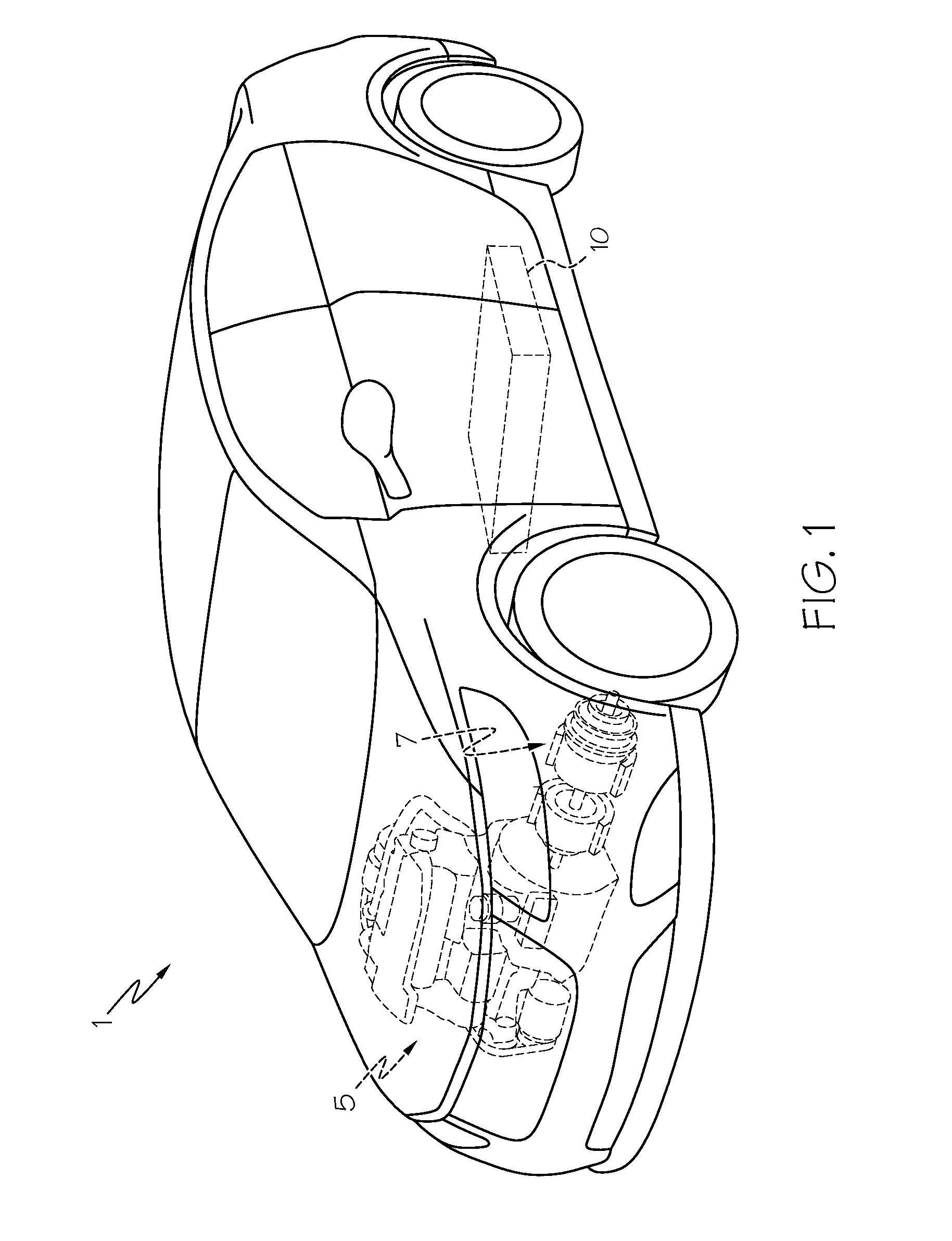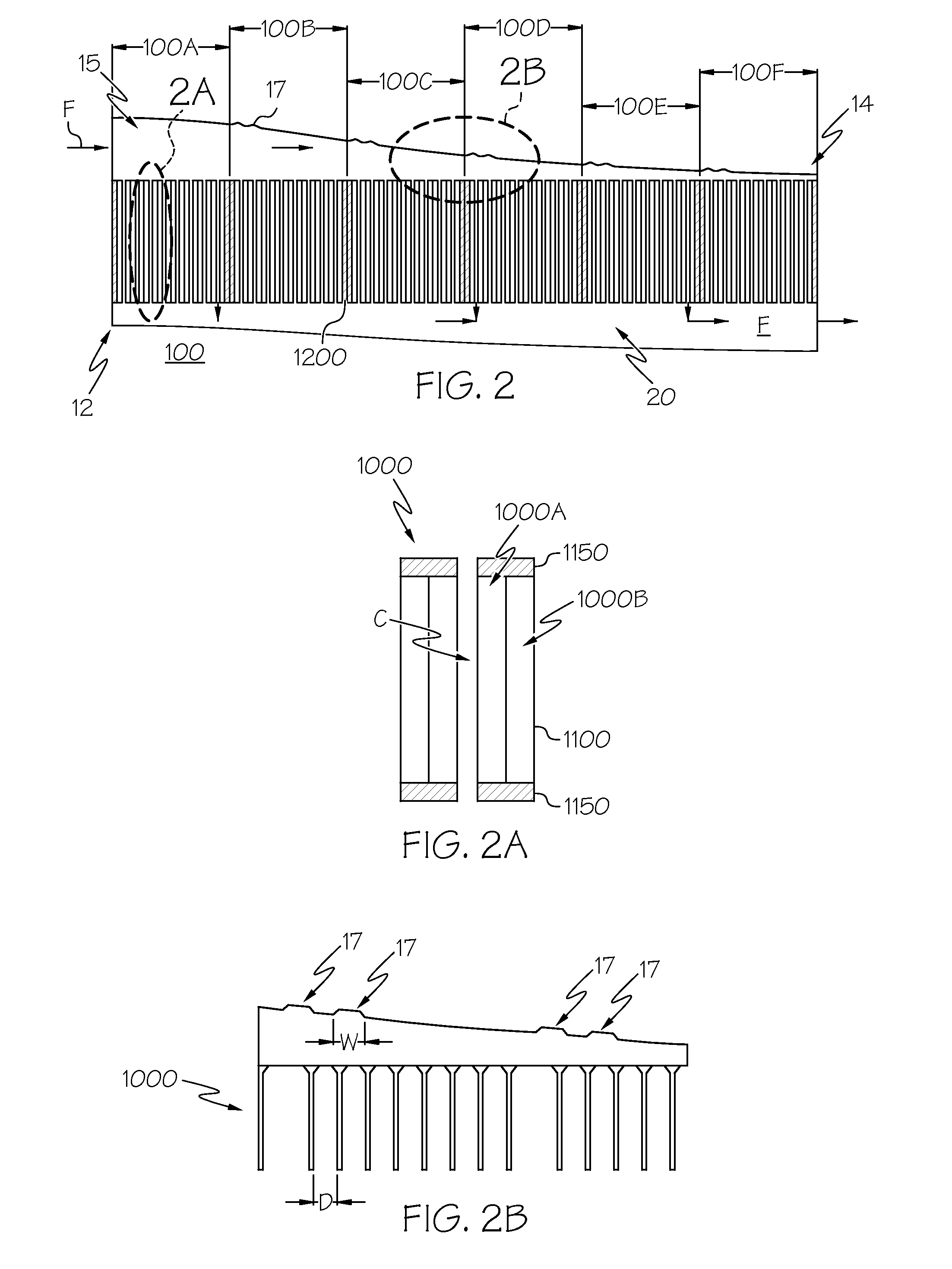Flow uniformity of air-cooled battery packs
a battery pack and airflow technology, applied in battery/fuel cell control arrangement, secondary cell details, hybrid vehicles, etc., can solve the problems of significant air flow (and concomitant temperature) non-uniformity among individual battery cells, damage to cells, and impact on their operation, so as to achieve more equitable distribution of cooling fluid and increase pressure
- Summary
- Abstract
- Description
- Claims
- Application Information
AI Technical Summary
Benefits of technology
Problems solved by technology
Method used
Image
Examples
Embodiment Construction
[0018]Referring first to FIG. 1, a vehicle 1 includes a hybrid propulsion system in the form of an electric power source made up of a conventional ICE 5 and a battery pack 10. Such a vehicle is known as a hybrid electric vehicle (HEV). It will be appreciated by those skilled in the art that vehicle 1 may not require an ICE 5, in such case, rather than being an HEV, it is an electric vehicle (EV); either form is within the scope of the present invention. An electric motor 7 may be coupled to one or both of the ICE 5 and battery pack 10 to provide traction to the wheels. Additional drivetrain components (none of which are shown) useful in providing propulsive power to one or more of the wheels and coupled to one or both of the battery pack 10 and ICE 5 are understood to include rotating shafts, axles, transmission, controllers or the like. While vehicle 1 is presently shown as a car, the applicability of the hybrid propulsion system to other such automotive forms (including trucks, bu...
PUM
| Property | Measurement | Unit |
|---|---|---|
| stiffness | aaaaa | aaaaa |
| pressure | aaaaa | aaaaa |
| width | aaaaa | aaaaa |
Abstract
Description
Claims
Application Information
 Login to View More
Login to View More - R&D
- Intellectual Property
- Life Sciences
- Materials
- Tech Scout
- Unparalleled Data Quality
- Higher Quality Content
- 60% Fewer Hallucinations
Browse by: Latest US Patents, China's latest patents, Technical Efficacy Thesaurus, Application Domain, Technology Topic, Popular Technical Reports.
© 2025 PatSnap. All rights reserved.Legal|Privacy policy|Modern Slavery Act Transparency Statement|Sitemap|About US| Contact US: help@patsnap.com



